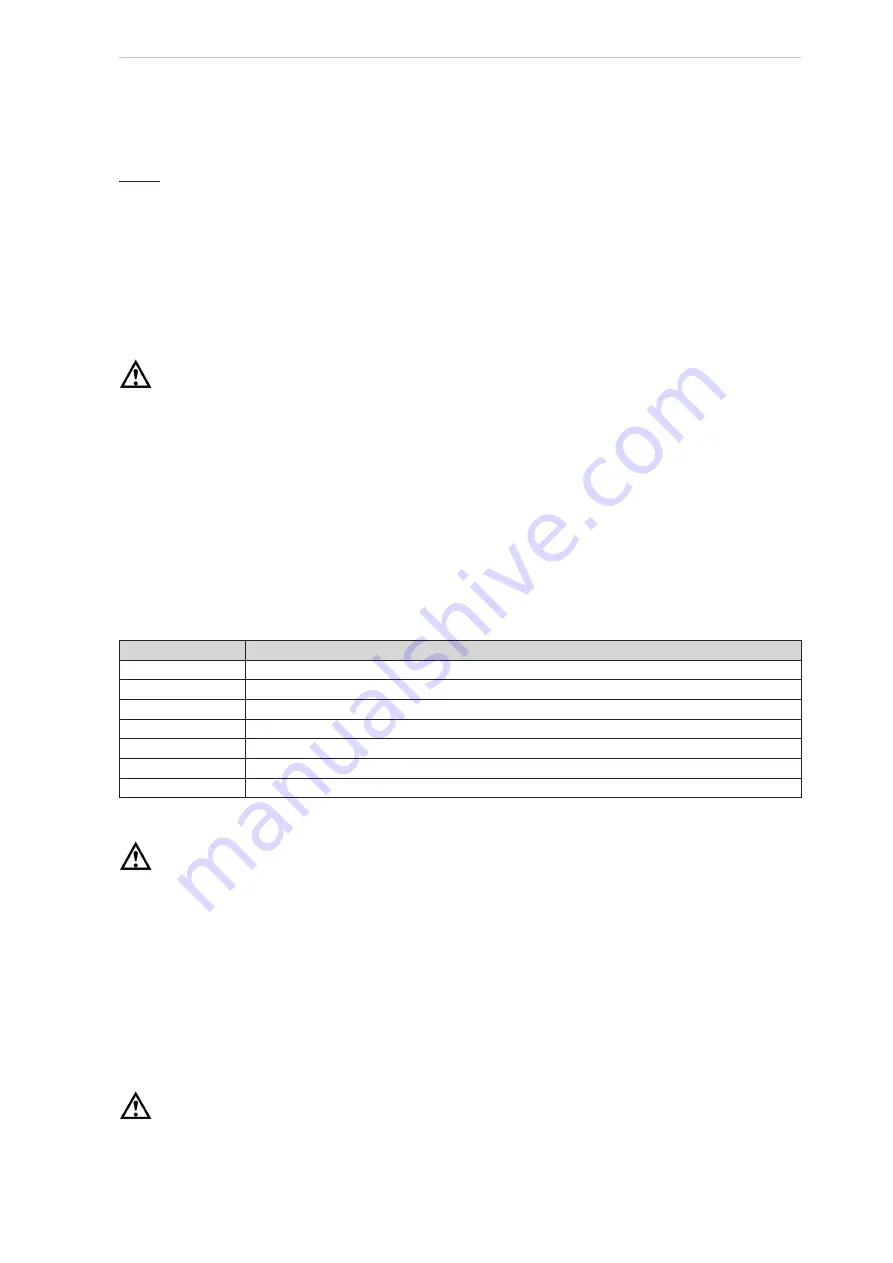
Operating manual- SAB 355 (including ATEX)
22/63
004059 en 2019.11
4.4
Electrical installations
ATEX:
On ATEX-executions, all electrical installations supplied with the compressor are in conformity
with the ATEX directive. If the installations are expanded or additional equipment is mounted, this
must also be in conformity with the ATEX directive.
For equipment not supplied by Johnson Controls Denmark, it is the contractor who is responsible
for ensuring that the equipment is in conformity with the ATEX directive.
Specifically, the contractor is responsible for equalising potential differences on the compressor.
Power supply
Danger!
HIGH VOLTAGE!
Before removing or opening any electrical enclosures, covers, plates, doors or working on any
electrical circuits, place the main switch of the compressor/unit in the "OFF" position and lock it.
Dismantle the main fuses to the compressor unit.
An electrician must analyse the electrical system to determine the possible use of power retaining
devices such as capacitors. Such power retaining devices must be disconnected, discharged or
made safe before maintenance is performed.
4.5
Lubricating oils
Compressor oils include the following oil types:
Code design
Oil types
M
Mineral oil, naphtenic base
A
Synthetic oils based on alkylated aromatics (alkyl-benzene)
AP
Synthetic oils blended from alkyl-benzene and poly-alfa-olefin base stocks
S
Semi synthetic oils (hydro-treated mineral oil on paraffinic base)
PAO
Synthetic oils based on poly-alfa-olefin
POE
Synthetic oils based on polyol esters
PAG
Synthetic oils based on polyalkylene glycols
See the SABROE oil recommendation for the recommended type of oil.
Warning!
When charging oil, follow the safety instructions given by the oil supplier (MSDS: Material Safety
Data Sheet). Always avoid direct contact with the oil as this may cause skin allergies. Always use
protective equipment, goggles and gloves, when charging oil.
When changing oil on the compressor or draining oil from the vessel of the refrigeration plant, al-
ways collect the used oil in containers marked “waste oil,” and send them to an approved hazard-
ous waste disposal site. It is not recommended to reuse oil.
Refrigerants
Be very careful when dealing with refrigerants. For safe handling, please refer to the safety data
sheets etc. delivered by the refrigerant supplier.
Danger!
Pay close attention to the fact that large amounts of escaping (or released) refrigerant entail risk
of suffocation. Body contact with leaking liquid refrigerant entails high risk of injuries caused by
intense cold.
















































